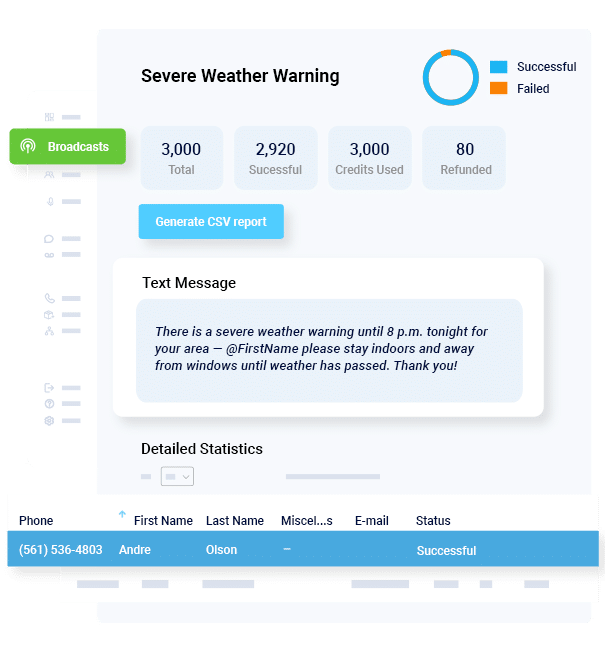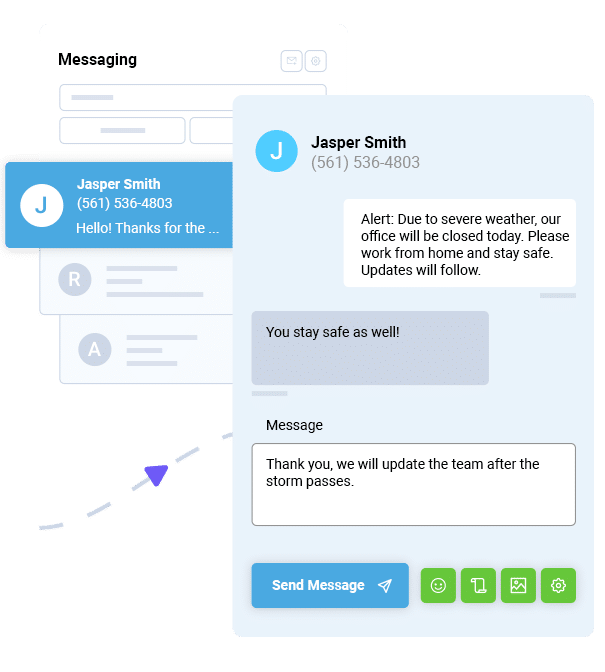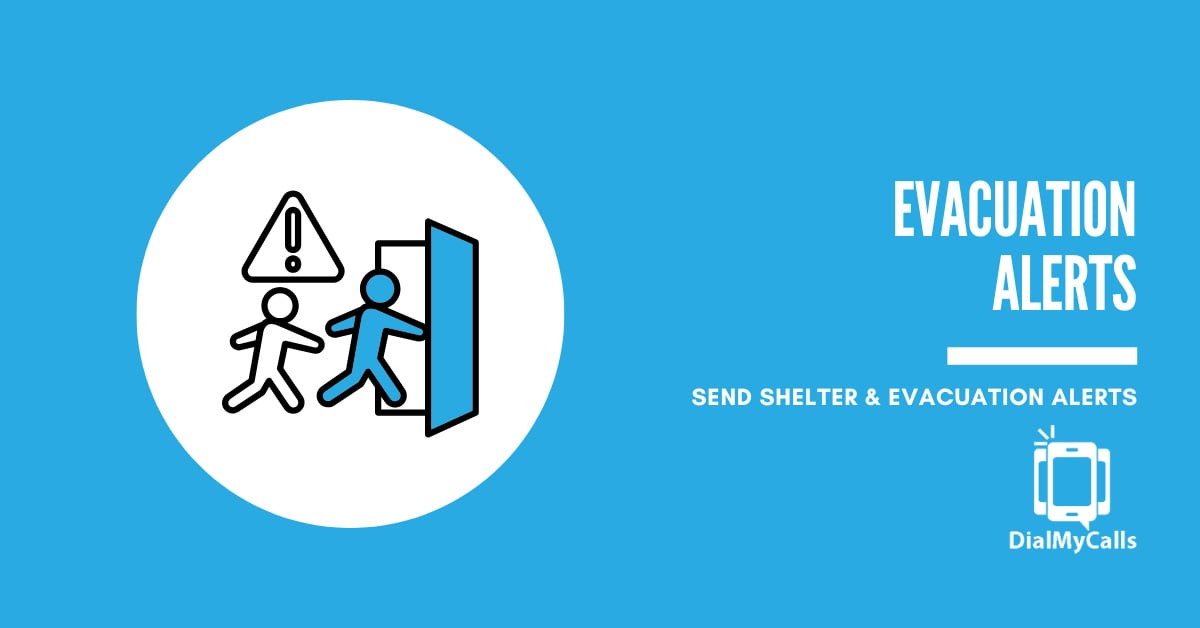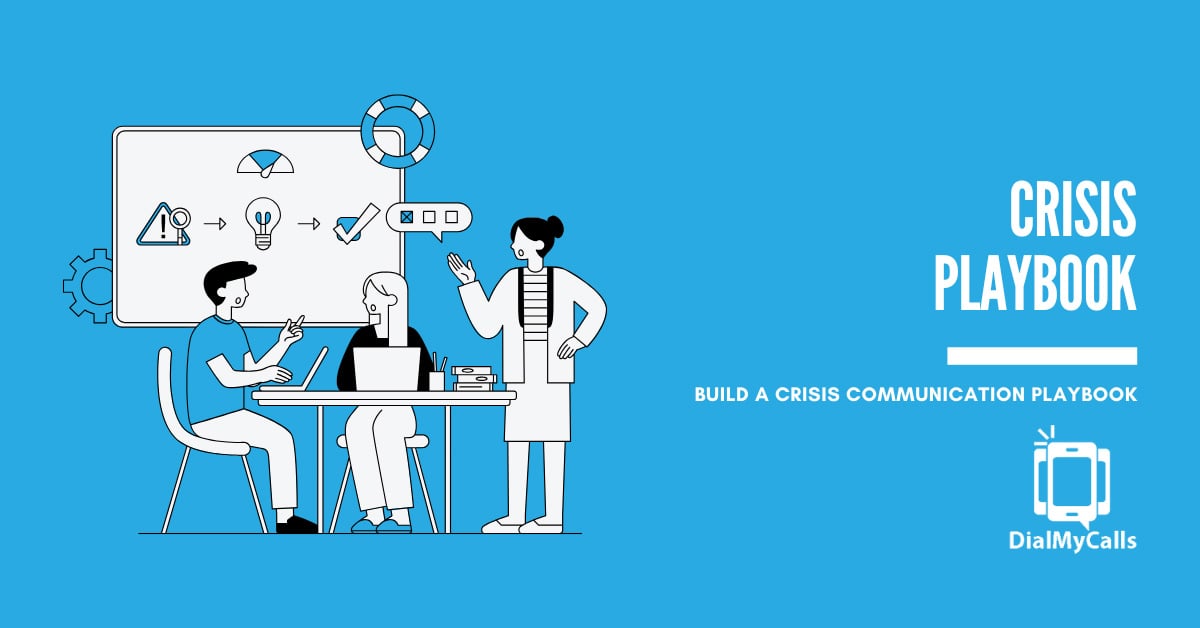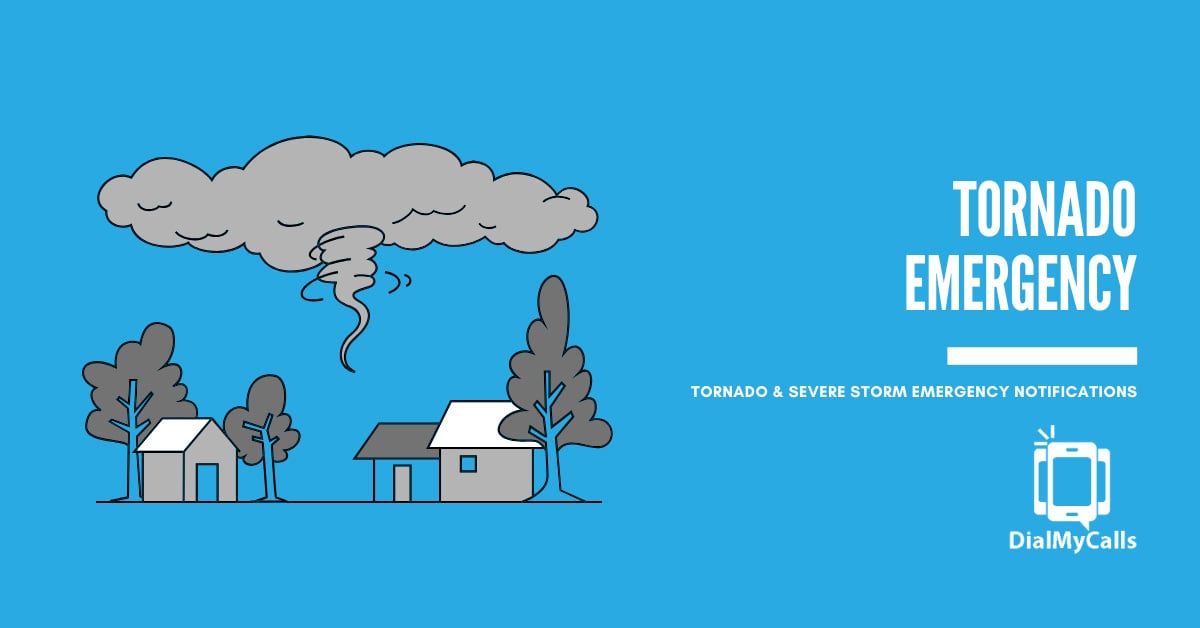6 Essential Steps to Crafting an Effective Emergency Response Plan
Posted by Tim Smith in Emergency Notification on August 14, 2024
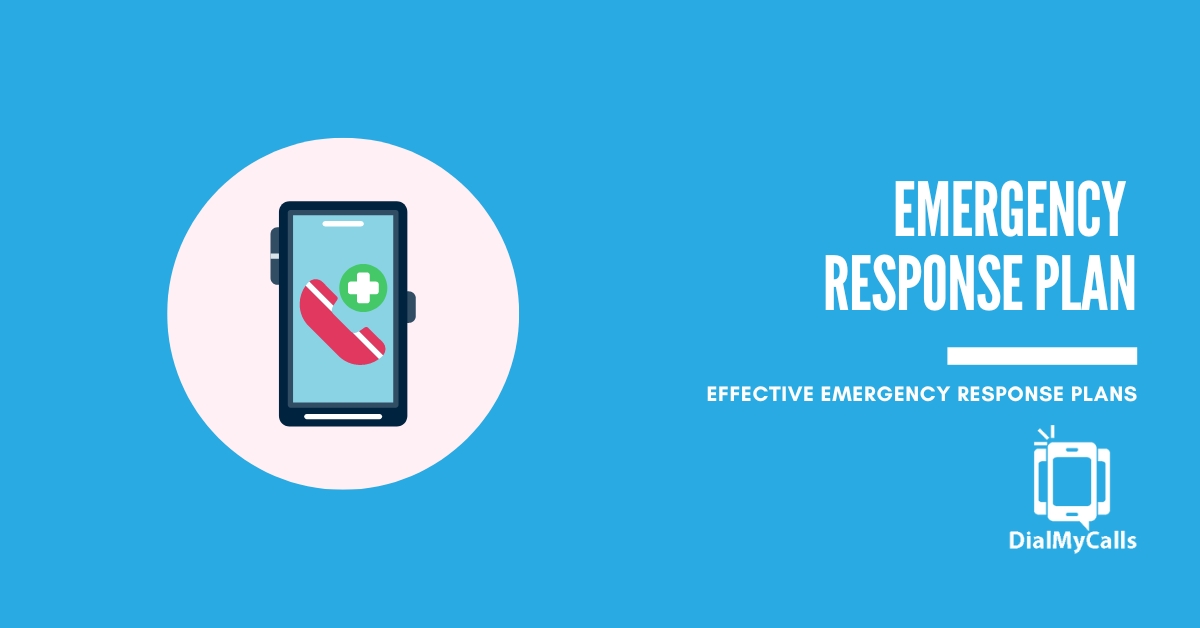
Emergencies can happen at any time and in any place. From natural disasters like hurricanes, earthquakes, and wildfires to man-made incidents such as shootings or chemical spills – the unexpected can strike without warning.
In these situations, having a well-crafted emergency response plan is critical for public safety. It not only helps mitigate risks but also saves lives and property. In this article, we will guide you through essential steps in developing an effective emergency response plan focusing on the critical role of telecommunications.
Understanding the Need for an Emergency Response Plan
- What is an Emergency Response Plan?
- Why Every Organization Needs an Emergency Response Plan
- Common Type of Emergencies
What is an Emergency Response Plan?
An emergency response plan is a detailed document outlining procedures and protocols to follow. It covers everything from risk assessment and communication strategies to the roles and responsibilities of team members.
Stay Connected with Mass Notifications
Create & Send a Broadcast to Thousands in Seconds
Why Every Organization Needs an Emergency Response Plan
There are myriad reasons why organizations form emergency response plans. Here are just four of the most cited responses to the question of why:
- To ensure the safety of employees and customers: An emergency response plan helps minimize risks and ensures that everyone knows what to do in an emergency, reducing the chances of injuries or fatalities
- To protect property and assets: A plan helps organizations take necessary precautions to safeguard their physical assets from damage during emergencies
- To maintain business continuity: An effective emergency response plan helps businesses resume operations faster, minimizing financial losses
- To comply with legal and regulatory requirements: Many industries have regulations that require organizations to have an emergency response plan in place
Common Type of Emergencies
While emergencies can vary in their nature and severity, some of the most common types are
- Natural Disasters: Hurricanes, earthquakes, floods, tornadoes, wildfires
- Man-Made Incidents: Shootings, chemical spills, power outages
- Health Emergencies: Pandemics or infectious diseases
No matter the type of emergency, having a well-prepared and practiced response plan can help reduce chaos and confusion.

6 Steps to Create an Effective Emergency Response Plan
- Conducting a Risk Assessment
- Establishing Roles and Responsibilities
- Developing Emergency Procedures
- Communication Plan
- Training and Drills
- Reviewing and Updating the Plan
Step 1: Conducting a Risk Assessment
The first step in emergency response planning is to conduct a risk assessment. This involves identifying potential hazards that could occur in your organization or community and assessing the level of risk they pose.
There are various tools and methods available for conducting a risk assessment, such as:
- Hazard Identification Checklists
- Risk Assessment Matrices
- Failure Modes and Effects Analysis (FMEA)
Consider the “Common Types of Emergencies” listed earlier. It is essential to evaluate both internal risks (such as equipment failure) and external risks (such as severe weather).
After identifying potential hazards, prioritize them based on their likelihood and potential impact. This helps focus resources and attention on high-priority threats that could have severe consequences.
Step 2: Establishing Roles and Responsibilities
Assembling a dedicated emergency response team is critical to handling an emergency effectively. The team should consist of individuals with diverse skills and expertise:
- Emergency Coordinator – responsible for overall coordination and decision-making during an emergency
- Communications Officer – in charge of communicating with external agencies, media, and the public
- Safety Officer – responsible for monitoring safety hazards during an emergency
- Team Leaders – oversee specific tasks or areas within the response plan
Once the roles have been assigned, train and equip your team members adequately. Training should cover their specific roles and general emergency protocols, such as first aid and evacuation procedures.
It is critical to have clear communication of duties within the emergency response team. Each member should be aware of their responsibilities and how they fit into the overall plan.
Additionally, make sure you have backup plans for key roles in case a team member is unavailable. This ensures no gaps in the response plan and that someone can step in if needed.
Step 3: Developing Emergency Procedures
An effective emergency response plan has detailed procedures for different types of emergencies. These procedures should be actionable and easy to follow, even in a high-stress situation.
- Evacuation Procedures: These steps should include designated evacuation routes, assembly points, and how to assist individuals with disabilities
- Lockdown Protocols: In the event of an active shooter or other dangerous situations, there should be clear instructions on how to secure the building and protect staff and students
- Communication Plans: This section outlines how information will be disseminated during an emergency. It includes protocols for notifying emergency services, employees, parents or guardians, and the public
It is crucial to ensure that emergency procedures are accessible to all individuals, including those with disabilities or who speak different languages. Provide materials in multiple formats and languages if necessary.
Additionally, you should consider accessibility when developing evacuation routes and designated assembly points. Ensure that there are options available for individuals with mobility impairments or other disabilities.
Step 4: Communication Plan
Internal communication is vital in an emergency. It ensures all employees are aware of the situation and can take appropriate action. Utilizing technology such as alarms, messaging systems, and apps can enhance the speed and effectiveness of internal communication.
- Alarms: Install audible alarms throughout the building to alert individuals of an emergency
- Messaging Systems: Use a mass notification system like DialMyCalls to send out automated calls, texts, or emails with important information during an emergency
- Apps: Develop a mobile app for your organization that includes emergency alerts and instructions, or utilize the already proven systems of an emergency notification app
External communication is just as important as internal communication in an emergency. It helps to keep stakeholders, families, and the public informed and reassured.
- Emergency Hotline: Establish a hotline for individuals to call for updates on the situation or ask questions
- Social Media: Use social media platforms to provide real-time updates during an emergency
- Press Releases: Have pre-written press releases ready in case of media inquiries
Designated individuals should be responsible for managing external communication and handling media inquiries. They should be trained to communicate effectively and accurately during a crisis.
Step 5: Training and Drills
Regular training programs ensure everyone knows their roles and responsibilities in an emergency. It also helps individuals become familiar with procedures, equipment, and communication strategies.
Specialized training for emergency response teams is crucial as these individuals will be the first on the scene during an emergency. This training should cover
- basic first aid
- disaster management techniques
- effective communication during a crisis
Conducting drills and simulations is an effective way to test the emergency response plan and identify any weaknesses or areas for improvement. It also allows individuals to practice their roles in a controlled environment, making them better prepared for a real-life emergency.
Types of drills can include
- fire drills
- earthquake drills
- active shooter drills
- lockdown drills
It is important to conduct these regularly and evaluate the performance of all team members. Any issues or concerns should be addressed promptly to improve the effectiveness of the plan.
Step 6: Reviewing and Updating the Plan
An emergency response plan should be reviewed and updated regularly to ensure it remains relevant and effective. A recommended review schedule is every six months or after any major changes in personnel, equipment, or procedures.
After every emergency or drill, it is important to gather feedback and incorporate any lessons learned into the plan. This ensures that the plan is continuously improving and adapting to potential risks.
Conclusion
An effective emergency management plan maintains public safety in any organization. It is the foundation for effective preparedness and helps mitigate risks during emergencies. With the increasing role of technology in our daily lives, telecommunications play a critical role in executing an emergency response plan.
As you create or review your emergency response plan, keep in mind the following key points:
Conduct a thorough risk assessment to identify potential hazards.
- Clearly define the roles and responsibilities of team members
- Develop detailed procedures for different types of emergencies
- Implement a communication plan that includes multiple channels such as phone calls, texts, and emails
- Regularly train and conduct drills to ensure preparedness
- Continuously review and update the plan as needed
At DialMyCalls, we understand the importance of effective communication during emergencies. Our emergency mass notification system software allows you to send out calls, texts, and emails to your employees or community members in times of crisis. With our easy-to-use platform, you can reach many people within minutes and keep them informed and safe.
Don’t wait for an emergency to happen. Start or review your emergency response plan today using these essential steps. Remember: preparedness is the key to ensuring public safety during unexpected situations!
Keep Everyone Connected & Informed
Get the Word Out Quickly with Bulk Texting and Voice Calls
Author
Tim Smith is the Media Manager at DialMyCalls, where he has leveraged his expertise in telecommunications, SaaS, SEO optimization, technical writing, and mass communication systems since 2011. Tim is a seasoned professional with over 12 years at DialMyCalls and 15+ years of online writing experience.
Try Using DialMyCalls Right Now
Start For Free
Recent Posts
- Essential SMS Alert Checklist for Parades, Rallies & Local Events
- How to Send Effective Shelter & Evacuation Text Alerts During Emergencies
- A Step-by-Step Guide to Building a Crisis Communication Playbook
- 6 Top Emergency Notification Challenges Schools Face and How to Solve Them
- 7 Best Practices for Tornado and Severe Storm Emergency Notifications
Categories
“I am a youth minister and have spent hours in the past calling students individually to remind them of an upcoming event or to get out an urgent announcement. With DialMyCalls.com, I cut that time down to about 1 minute. I also love how I can see exactly who answered live and how long they listened so I know if they heard the whole message. DialMyCalls.com is the best website I have stumbled upon all year! Thanks!”
Central Baptist Church
Try Using DialMyCalls Right Now
Start For Free
Author
Tim Smith is the Media Manager at DialMyCalls, where he has leveraged his expertise in telecommunications, SaaS, SEO optimization, technical writing, and mass communication systems since 2011. Tim is a seasoned professional with over 12 years at DialMyCalls and 15+ years of online writing experience.
Try Using DialMyCalls Right Now
Start For Free
Recent Posts
- Essential SMS Alert Checklist for Parades, Rallies & Local Events
- How to Send Effective Shelter & Evacuation Text Alerts During Emergencies
- A Step-by-Step Guide to Building a Crisis Communication Playbook
- 6 Top Emergency Notification Challenges Schools Face and How to Solve Them
- 7 Best Practices for Tornado and Severe Storm Emergency Notifications
Categories
“I am a youth minister and have spent hours in the past calling students individually to remind them of an upcoming event or to get out an urgent announcement. With DialMyCalls.com, I cut that time down to about 1 minute. I also love how I can see exactly who answered live and how long they listened so I know if they heard the whole message. DialMyCalls.com is the best website I have stumbled upon all year! Thanks!”
Central Baptist Church
Try Using DialMyCalls Right Now
Start For Free
